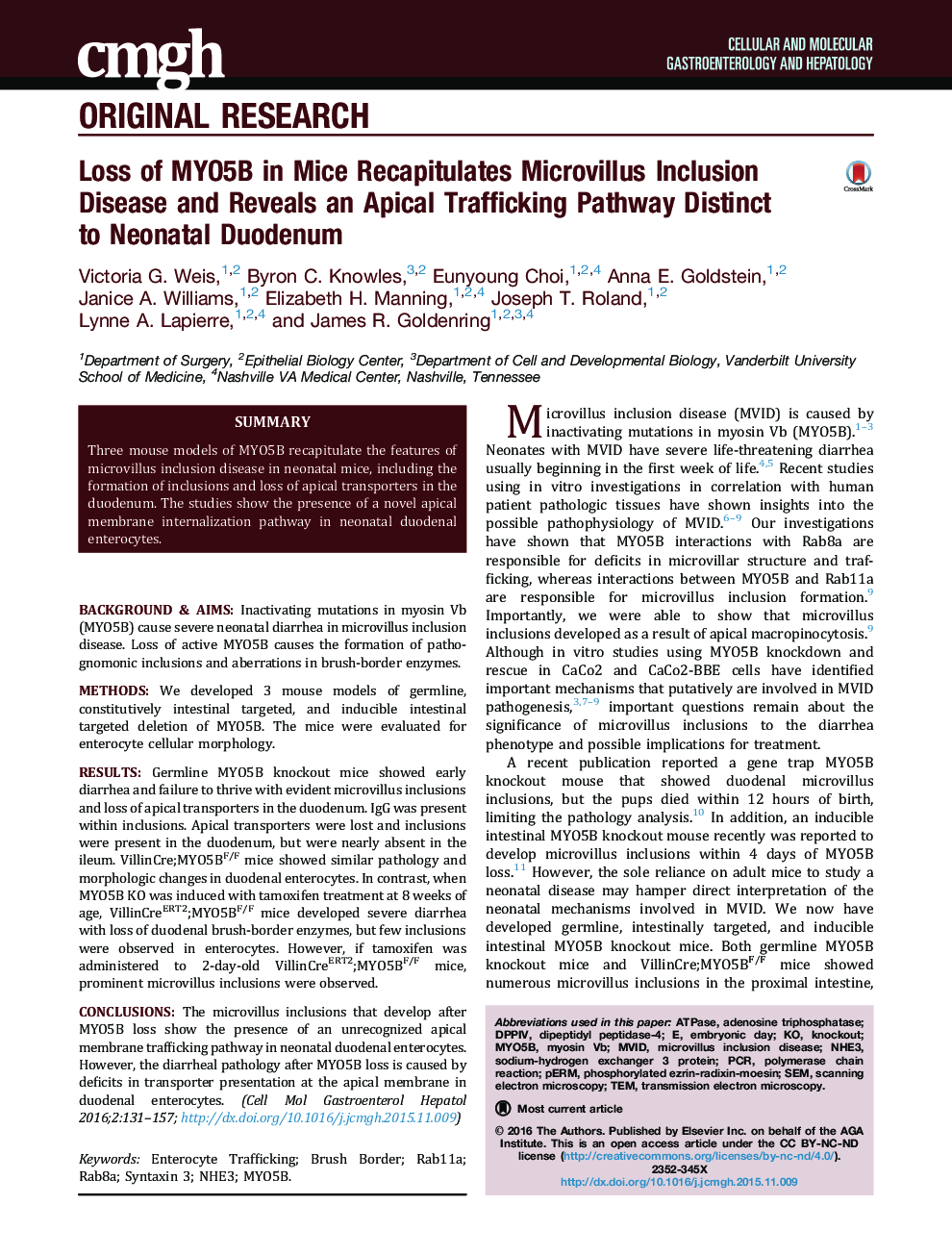| Article ID | Journal | Published Year | Pages | File Type |
|---|---|---|---|---|
| 2042407 | CMGH Cellular and Molecular Gastroenterology and Hepatology | 2016 | 27 Pages |
Background & AimsInactivating mutations in myosin Vb (MYO5B) cause severe neonatal diarrhea in microvillus inclusion disease. Loss of active MYO5B causes the formation of pathognomonic inclusions and aberrations in brush-border enzymes.MethodsWe developed 3 mouse models of germline, constitutively intestinal targeted, and inducible intestinal targeted deletion of MYO5B. The mice were evaluated for enterocyte cellular morphology.ResultsGermline MYO5B knockout mice showed early diarrhea and failure to thrive with evident microvillus inclusions and loss of apical transporters in the duodenum. IgG was present within inclusions. Apical transporters were lost and inclusions were present in the duodenum, but were nearly absent in the ileum. VillinCre;MYO5BF/F mice showed similar pathology and morphologic changes in duodenal enterocytes. In contrast, when MYO5B KO was induced with tamoxifen treatment at 8 weeks of age, VillinCreERT2;MYO5BF/F mice developed severe diarrhea with loss of duodenal brush-border enzymes, but few inclusions were observed in enterocytes. However, if tamoxifen was administered to 2-day-old VillinCreERT2;MYO5BF/F mice, prominent microvillus inclusions were observed.ConclusionsThe microvillus inclusions that develop after MYO5B loss show the presence of an unrecognized apical membrane trafficking pathway in neonatal duodenal enterocytes. However, the diarrheal pathology after MYO5B loss is caused by deficits in transporter presentation at the apical membrane in duodenal enterocytes.
